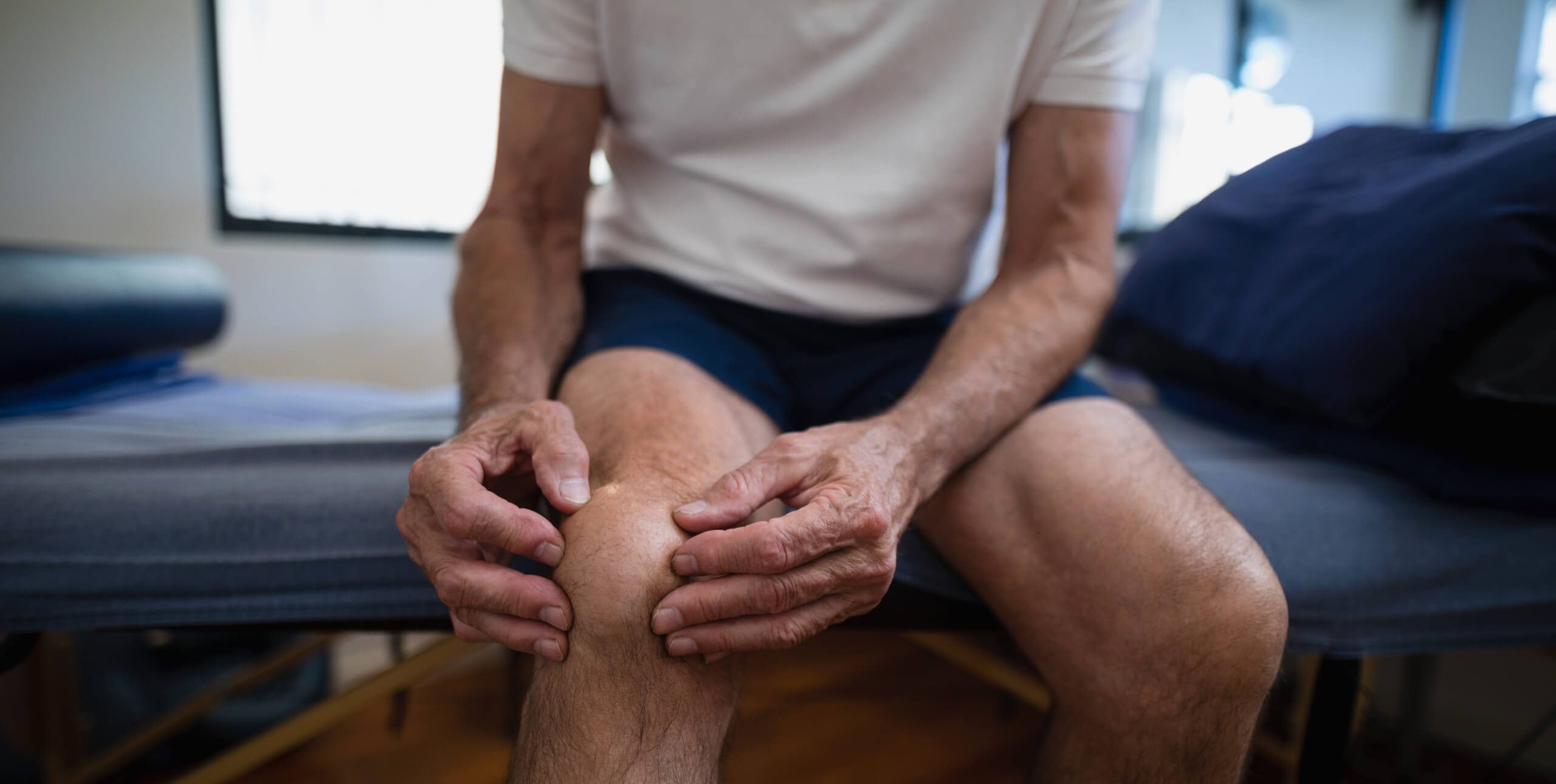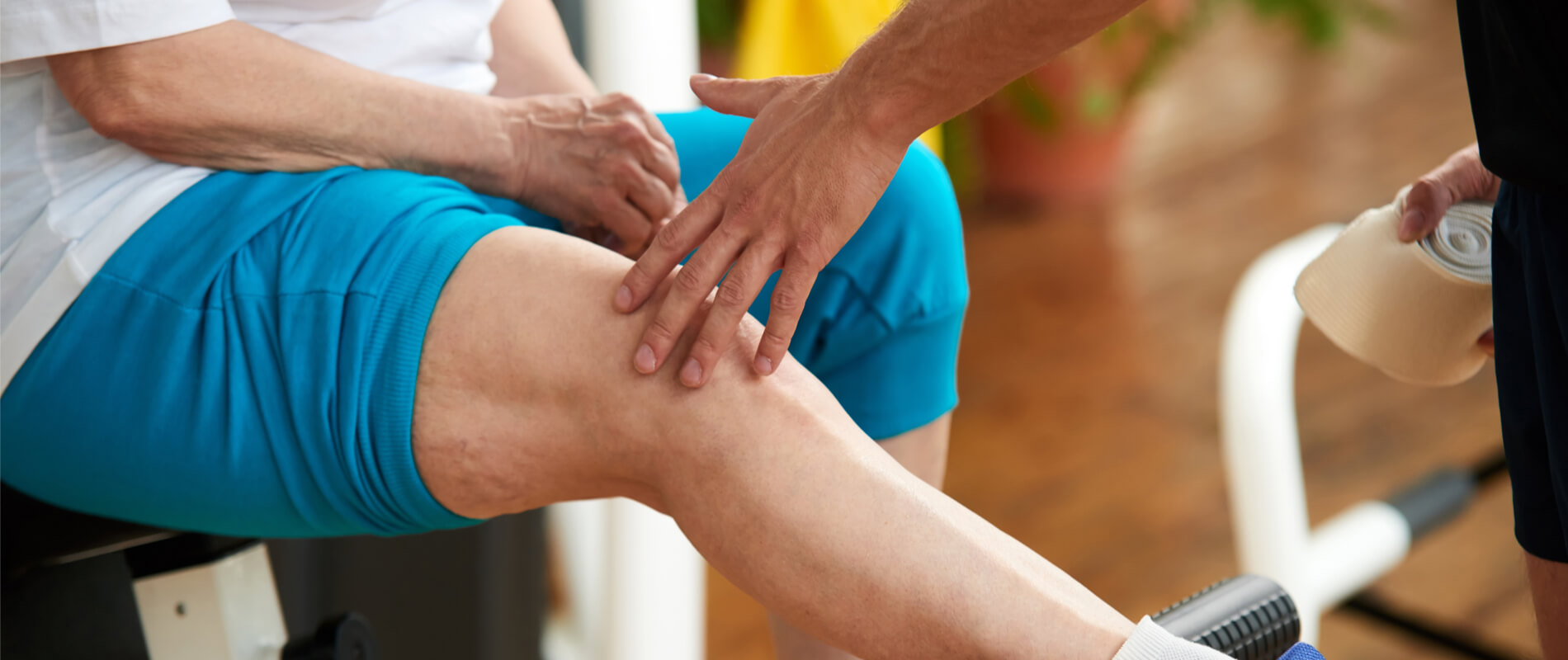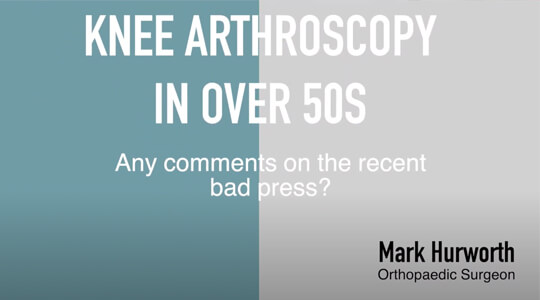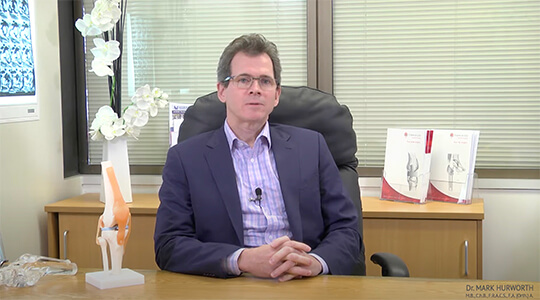Knee arthritis Perth
Overview of the best treatment options for knee arthritis
Knee arthritis is one of the most common conditions I see as an orthopaedic surgeon. Below, we will look at the causes and types of knee arthritis, and best treatment options. In this area, your effort and agency as a patient make a big difference, and our practice revolves around combining this agency with surgery to provide the best possible outcomes.

My orthopaedic practice in a nutshell
Knee arthritis definition
What is knee arthritis and how do you know you have it?
The word arthritis means inflammation (-itis) of a joint (arthro-). When you have inflammation, the symptoms you will experience will often be pain and/or swelling. These are the most obvious signs, but you may also experience loss of motion or limping (pain when weight-bearing) when it becomes too painful for one of your joints to carry weight.

Mr Mark Hurworth, Knee surgeon Perth
“Sometimes a patient will tell me their knee feels quite good in the morning but then their pain gets worse in the afternoon. This is typical of osteoarthritis.”
In other situations, you may feel that your knee starts swelling as soon as you use it more intensely. Pain that keeps you awake at night affects your quality of life significantly. It’s not uncommon to find that when you have knee arthritis, you may be feeling similar symptoms in other areas such as the other knee, the base of your thumb or your midfoot. We call this “generalised osteoarthritis” i.e. the disease affects multiple joints.
I will generally see you when you feel that you want to consider surgical options, so it is worth coming to a clear diagnosis with your GP and thinking carefully about non-surgical options beforehand. As the saying goes: “If you visit a surgeon you will be offered surgery.”
The aim of the first consultation is to clarify the diagnosis, and make a well-informed decision about treatment, creating the best possible outcomes by optimizing nonoperative, pre- and post-operative treatment, together with a high level of surgical expertise.
Causes knee arthritis
What are the causes and different types of arthritis?
Knee arthritis can be caused by a variety of factors. My first goal as your knee specialist is to be clear about the type of knee arthritis you might be suffering from:
- Osteoarthritis: often age-related, bilateral and it affects multiple joints.
- Post-traumatic arthritis: your knee may have undergone trauma, such as a meniscus injury or an ACL injury, typically a few decades prior.
- Inflammatory arthritis: these differ from osteoarthritis – rheumatoid arthritis is the best-known. Other types are gout or crystal-deposition diseases, inflammatory bowel-related and psoriasis-related. The good news is that ‘disease-modifying agents’ are often used to counteract the symptoms of rheumatoid and similar inflammatory arthritis. A rheumatologist (a physician specialising in joint conditions) would be useful to see prior to meeting with me if you have one of these conditions.
- Arthritis caused by weight – if you reduce your body weight by 20% you will reduce your symptoms by 50%. It’s simple mechanics and it works. Obesity results in joints wearing out earlier – especially the knee.
As an orthopaedic surgeon, I aim to give you an accurate and clear diagnosis and discuss both operative and non-operative treatment if appropriate.

Mr Mark Hurworth, Knee surgeon Perth
Story continues below video gallery
Videos about knee conditions and surgeries
Diagnosis knee arthritis
How is it diagnosed?
One of the first elements of making a diagnosis of knee arthritis is chatting about the symptoms you experience. We discuss the type of pain or discomfort you feel and any loss of function.
The next step is an examination. By looking at the way your knee joint behaves under stress, and how you feel when you sit, stand or walk, we can gain more clarity about the condition.
The third pillar of diagnosis is what we see on X-Rays and other imaging. An experienced orthopaedic knee specialist will know what to look for and will recognise the characteristic findings on a radiological image.
Once we have this full picture, we will discuss the best way forward, and the most suitable treatment or surgery options for your circumstances.

Avoid surgery for knee arthritis
Non-operative treatments
The non-operative treatments that have been shown to work will be the an important topic of our conversation if you have knee arthritis:
- Weight loss: For every kilo of body weight you lose, your knee is actually spared up to 4 kg of weight going through it. Again: 20% reduction in body weight will typically reduce symptoms by 50%. Don’t get locked into thinking you can’t lose weight because you can’t exercise – it’s not true. Weight loss is a combination of diet and appropriate exercises that your body can cope with.
- Change in activities: If you are squatting, or doing leg presses these can put a huge amount of force through the knee. If you are doing these types of activity as part of your workout, we will discuss other activities that don’t have the same negative impact on.
- Anti-inflammatories: You may have heard about treatment with COX 2 inhibitors such as Celebrex or Mobic. In most cases you would already have tried these, but if not then it makes sense to treat inflammation with anti-inflammatories.
- Exercise: I typically prefer closed-chain exercises comprising smooth gliding exercises using both limbs. This will involve a static or road bicycle, a cross-trainer/elliptical trainer and sometimes a rowing machine. This exercise should comprise just enough effort that you can still have a conversation at least 80% of the time. The typical program will consist of three sessions per week, about one hour each. I recommend that you choose something to listen to or watch on television of a fixed length, so that you know the time you are aiming at. You can also connect your exercise program to one of our research programs on non-operative management of knee arthritis, and help other patients by submitting your exercise data to our system.
- Time: Time is still a great healer. It is important to realise that the natural history (ie what happens if we do nothing) of many osteoarthritis situations is intermittent flare-ups (bits of cartilage flake off) that cause an inflammatory response that lasts a few months then often settles. Teaching you how to manage the condition is often the key element of what a knee specialist does.
- Steroid injections: For some forms of inflammatory arthritis, this may be effective, or for short term relief of symptoms if you need change for temporary activities.
- Caring for your leg: As we age, our body loses muscle. If our knee aches, we tend to stop using it as much, resulting in more muscle loss. Again, managing this is a key to successful outcomes in both nonoperative and operative pathways.
As you are looking up information online on the subject of knee arthritis, you will come across content that might not be 100% reliable. That is why I decided to include a list of treatments lacking supportive evidence.
- Stem cell injections
- Glucosamine and chondroitin sulphate
- Other injections, despite significant marketing campaigns, in my opinion, don’t work any better than regular steroid injections.
- Stopping using the leg – avoiding motion can be disastrous without a clear reason. If you don’t use it, you lose it. Motion is lotion for the knee.
Knee arthritis surgery
Surgery for knee arthritis
Once we have confirmed your diagnosis, surgery can be discussed as the preferred treatment option, depending on your circumstances. Let’s go over the various operative treatments – or surgery types – for knee arthritis:
- Knee arthroscopy: Typically, there is less benefit from an arthroscopy the older you are (especially when you are over 50). This is because the benefits of an arthroscopic procedure are generally smaller the more ‘worn out’ your knee is. I would also be cautious of high expectations if you have already had one or more arthroscopies. Having said that, if you have new-onset symptoms, especially after trauma, and symptoms such as locking and clicking, then arthroscopy may be of benefit.
- Osteotomy: This may sound primitive, as it involves breaking the bone and changing the alignment of the leg to take the weight off the part of the knee that is most affected by arthritis. It can be very effective if you are a younger patient, especially if you are still doing heavy physical work.
- Knee replacement: There are various types of knee replacement. The most common type is when I replace the femoral and tibial surfaces (top and bottom). Sometimes, if your kneecap is in good shape, we may spare it. There are also partial knee replacements when we replace the medial (inside) or patellofemoral compartment.
This overview helps you understand that you may not necessarily need a knee replacement when signs of arthritis are detected. It is important to get all the information and an accurate diagnosis before you make any decisions about treatment or surgery.
Recovering after knee arthritis surgery
Recovery after surgery for knee arthritis
The best piece of advice a knee specialist can give you is that you need to learn to manage your knee and not let it manage you – prior to surgery.

Mr Mark Hurworth, Knee surgeon Perth
“It’s important to be clear about this: If you haven’t learned to handle pain before surgery, you will struggle to handle a painful operation such as a knee replacement.”
That is why I advise trying to let your function control your pain, not the other way around. That – in my experience – puts you in the best position to do well after your knee surgery.

Mr Mark Hurworth, Knee surgeon Perth
“At our Perth practice, we participate in innovative research in this area and our focus is on optimising function: non-operative, pre-operative and post-operative. One of the crystal-clear insights of our research program is this: starting your exercise program after you have had surgery is not ideal. To get the best possible recovery after knee surgery, you need to start before your operation.
It’s important to be realistic. You won’t have the knee you had as a 20-year-old after your knee surgery. Also, the literature in this area is clear that the improvement after replacement surgery is an ongoing process out to 2 years after surgery. I always tell my patients to think slow and steady, and not to expect rapid progress.
I do not recommend jogging or any activity that involves jumping after a knee replacement. Cycling on the other hand is something you should start doing as soon as possible and the same goes for walking. Whilst hydrotherapy is popular, social and may feel good, it does not work your muscles compared to cycling or walking, so my advice is a “land-based” exercise strategy.
Patients sometimes ask if they will be able to kneel after knee surgery. The best predictor of postoperative knee bend is your preoperative flexion or knee bend. There is approximately a 50% chance that you will be able to kneel afterwards. Again, if you invest in getting in the best shape possible prior to surgery, the odds will be in your favour. If you are in poor shape, the operation will not be as successful. This is the ultimate “takes two to tango” operation – your input makes a big difference.
Your knee is a cylindrical structure in three dimensions, so it is predictable that swelling (universal after this sort of surgery) will make it difficult to bend. A patient from a Scottish background recently told me it felt like bending a haggis… It felt like the knee would explode if she bent it too far! I also like to use the illustration of bending a balloon – it feels like it will pop at the front and kink at the back – this is quite normal, and you need to keep going.
Swelling is one of the factors that all patients comment on – it typically takes three months before you start to think your knee is beginning to look normal again.
Most patients will need crutches for 4-6 weeks and will not be permitted to drive a vehicle for 6 weeks.
You may need some relatively strong painkillers after surgery. Always remember that opiate medication is highly addictive. When you start it, you should have a clear idea of how to stop it. Speak to our clinic nurse at two weeks after surgery – she has some great tips.
Knee arthritis surgeon Perth
The way I help my patients in Perth
When you come to see me at my Perth practice, we will often talk about your effort and agency as the patient. In the media, there is a lot of talk about robotic surgery. Whilst it is clear that robots are here to stay, experience suggests that the advantages of using a robot are minimal compared to an experienced surgeon and a motivated, well-prepared patient.
This is why I always try to keep things in context: surgery can also only do so much. You need to be convinced in your own mind that you have:
- Exhausted nonoperative management
- prepared as best possible for surgery
Our aim at the practice is to be world leaders in this area: helping you to manage your limb, not be controlled by pain. We help you deal with this pain prior to surgery, which puts you in a better position for recovery.

Mr Mark Hurworth, Knee surgeon Perth
Whatever your situation and the condition of your knee(s), speak to my team and let’s work together to create the best possible outcomes.


